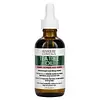What's inside
What's inside
 Key Ingredients
Key Ingredients

 Benefits
Benefits

 Concerns
Concerns

 Ingredients Side-by-side
Ingredients Side-by-side

Alcohol Denat.
AntimicrobialWater
Skin Conditioning4-Terpineol
MaskingPolysorbate 60
EmulsifyingGlycerin
HumectantMelaleuca Alternifolia Leaf Oil
AntioxidantButylene Glycol
HumectantCentella Asiatica Extract
CleansingGold
Cosmetic Colorant(Licorice/Reynoutria Japonica) Root/Stem Extract
AntioxidantGlycyrrhiza Glabra Root Extract
BleachingCamellia Sinensis Leaf Extract
AntimicrobialMagnolia Liliflora Flower Extract
Skin ConditioningRosmarinus Officinalis Leaf Extract
AntimicrobialGlyceryl Glucoside
Humectant1,2-Hexanediol
Skin ConditioningBifida Polysaccharide
HumectantSodium Hyaluronate
HumectantOzothamnus Diosmifolius Extract
Aspergillus/Buckwheat Ferment Extract
AntioxidantSimmondsia Chinensis Seed Oil
EmollientOlea Europaea Fruit Oil
MaskingCapryloyl Glycine
CleansingPrunus Amygdalus Dulcis Oil
Skin ConditioningAlcohol Denat., Water, 4-Terpineol, Polysorbate 60, Glycerin, Melaleuca Alternifolia Leaf Oil, Butylene Glycol, Centella Asiatica Extract, Gold, (Licorice/Reynoutria Japonica) Root/Stem Extract, Glycyrrhiza Glabra Root Extract, Camellia Sinensis Leaf Extract, Magnolia Liliflora Flower Extract, Rosmarinus Officinalis Leaf Extract, Glyceryl Glucoside, 1,2-Hexanediol, Bifida Polysaccharide, Sodium Hyaluronate, Ozothamnus Diosmifolius Extract, Aspergillus/Buckwheat Ferment Extract, Simmondsia Chinensis Seed Oil, Olea Europaea Fruit Oil, Capryloyl Glycine, Prunus Amygdalus Dulcis Oil
Ingredients Explained
These ingredients are found in both products.
Ingredients higher up in an ingredient list are typically present in a larger amount.
This tea tree oil comes from the leaves of the Tea Tree plant. Tea tree oil has antioxidant, anti-inflammatory, and antimicrobial properties.
According to the book Journal of Profiles of Drug Substances, tea tree helps in reducing acne-causing bacteria such as Propionibacterium acnes. This is due to the Terpinen components of tea tree oil.
Tea tree may cause sensitivity and irritation for some people. This oil naturally contains fragrance such as linalool and limonene.
However, research shows irritation usually occurs when using pure tea tree oil and not in cosmetic products.
Tea tree oil was found to help relieve the symptoms of psoriasis in one study.
Tea tree oil is toxic when ingested. Another study showed it to caused damage to the nervous system of dogs and cats when applied to their skin or given orally.
Learn more about Melaleuca Alternifolia Leaf OilRosmarinus Officinalis Leaf Extract comes from rosemary. Rosemary is native to the Mediterranean.
While Rosmarinus Officinalis Leaf Oil can be volatile due to its fragrant properties, the fragrance components are usually removed in the leaf extract.
Rosemary Leaf Extract contains many antioxidants such as rosmarinic acid and caffeic acid. Rosemarinic acid, a compound found in rosemary leaf, has been found to help soothe skin conditions such as eczema and acne.
Learn more about Rosmarinus Officinalis Leaf Extract